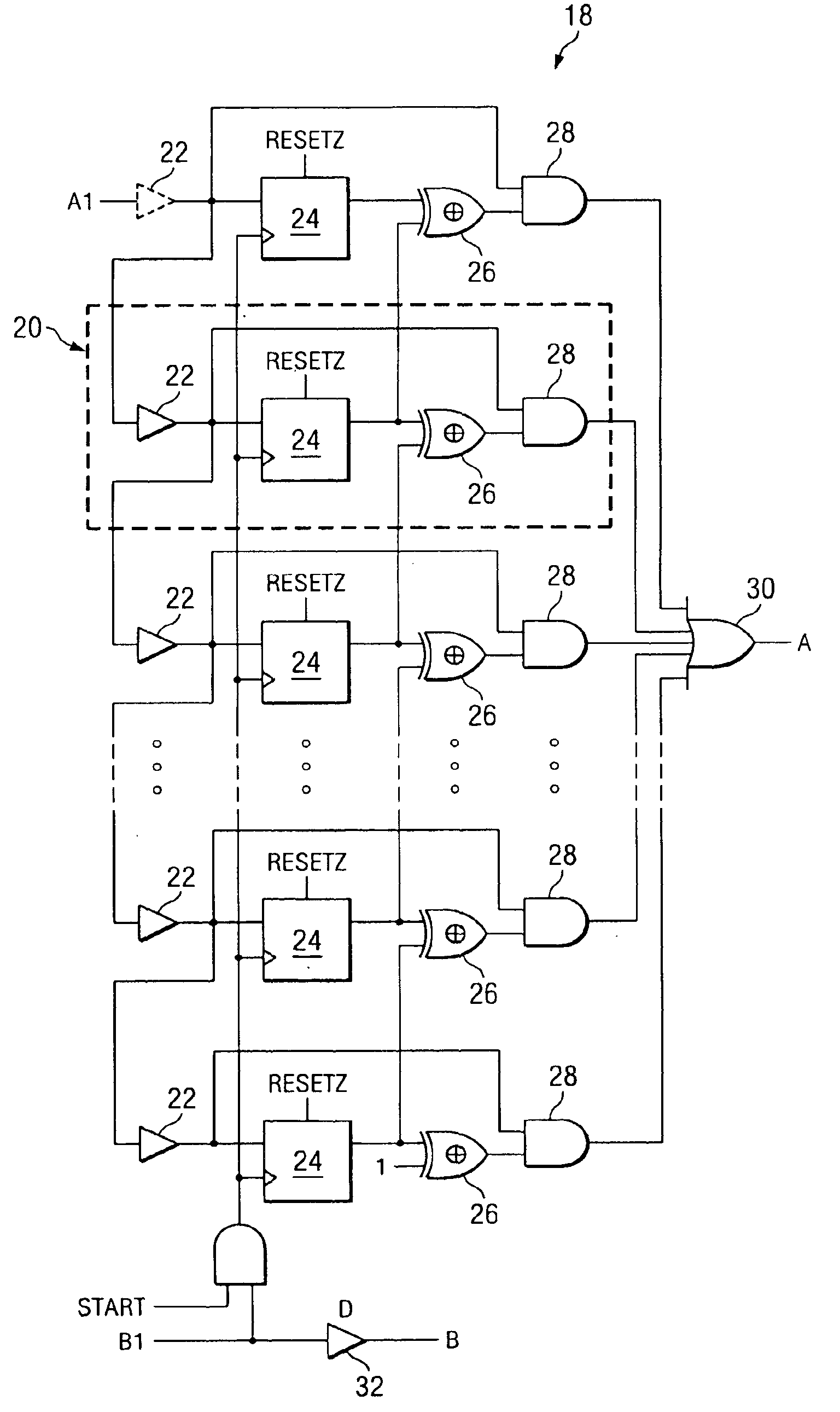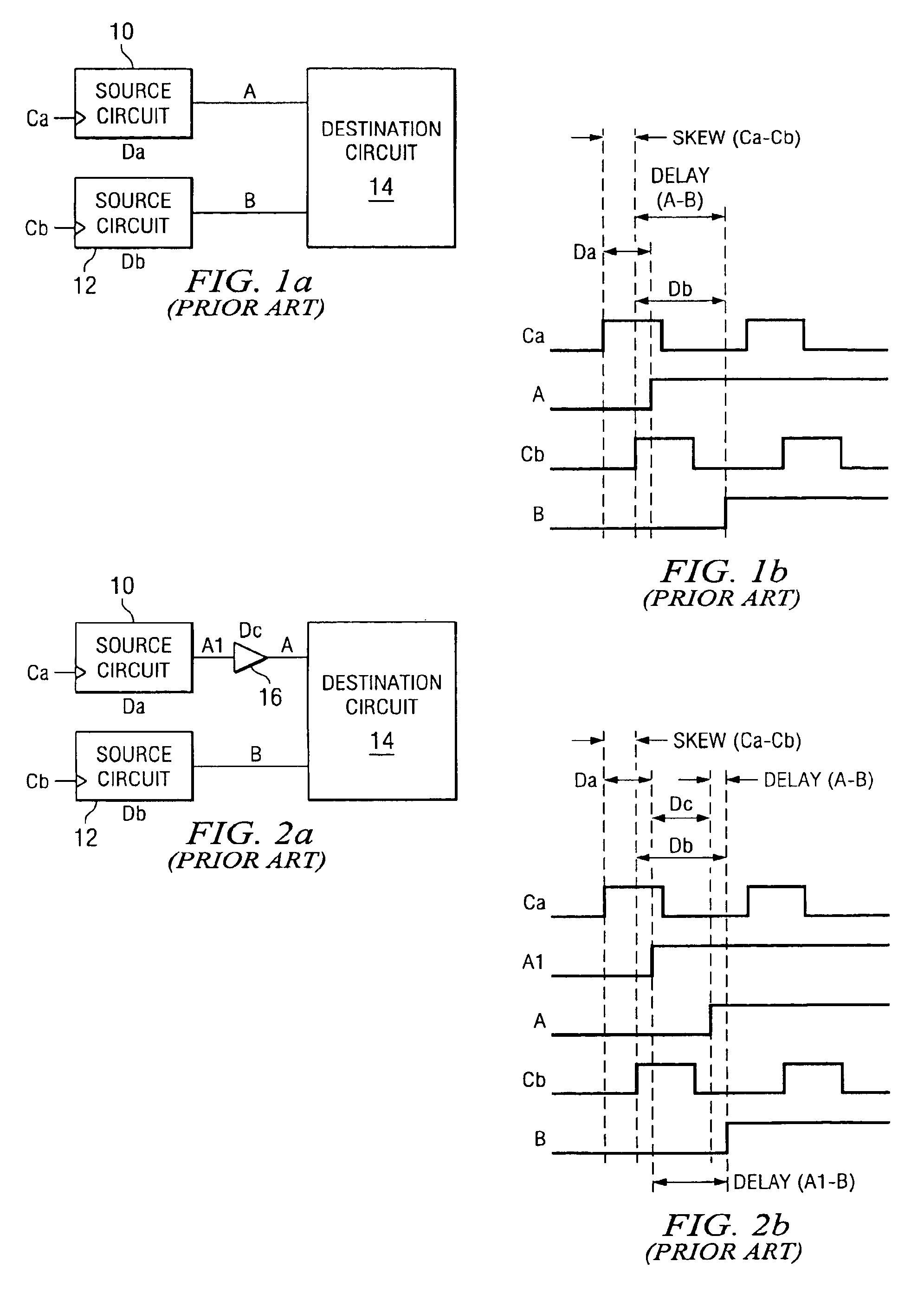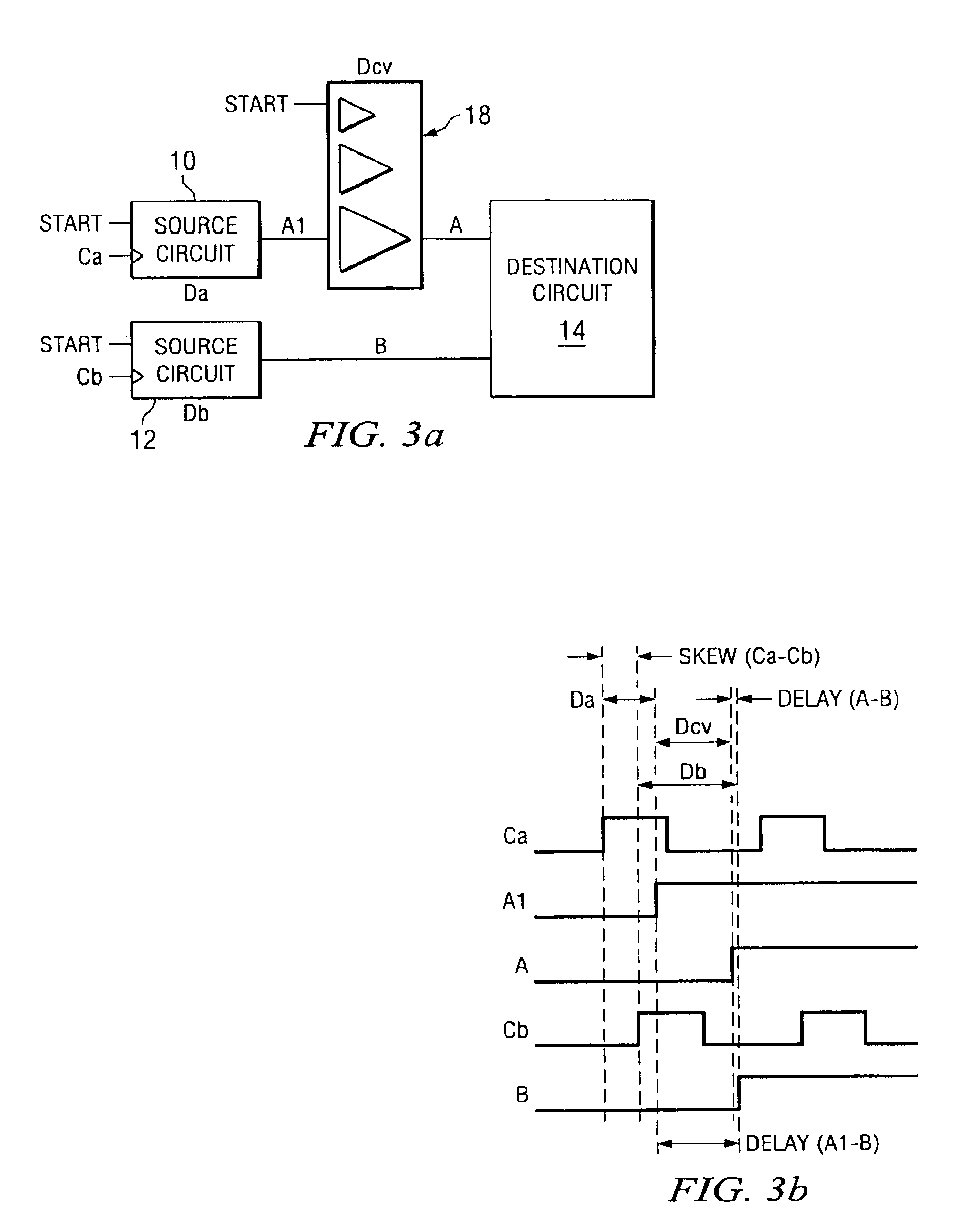Circuitry for reducing the skew between two signals
a circuit and signal technology, applied in the field of electronic circuits, can solve the problems of digital spread delay and analog spread delay, and achieve the effect of reducing the delay between signals
- Summary
- Abstract
- Description
- Claims
- Application Information
AI Technical Summary
Benefits of technology
Problems solved by technology
Method used
Image
Examples
Embodiment Construction
[0021]The present invention is best understood in relation to FIGS. 1-4 of the drawings, like numerals being used for like elements of the various drawings.
[0022]FIGS. 2a and 2b illustrate a prior art solution to the problem of signal skew. FIG. 2a is the same as the example circuit of FIG. 1a, with the addition of a delay buffer 16 between the output (A1) of source circuitry 10 and the input (A) to user circuitry 14. The delay Dc is calculated to compensate for the delays caused by clock skew and logic and routing delays. With the addition of delay buffer 16, the delay between signals A and B could be estimated as:
Delay(A−B)=Skew(Ca−Cb)+Db−(Da+Dc)
[0023]However, it should be noted that clock and signal delays are not exact, since each has a spread which may very based on processing variations and environmental factors. Some environmental factors, such as temperature, may vary during operation of a device. Hence Ca=Canom±ΔCa, Cb=Cbnom±ΔCb, Da=Danom±ΔDa, Db=Dbnom±ΔDb, and Dc=Dcnom±ΔD...
PUM
 Login to View More
Login to View More Abstract
Description
Claims
Application Information
 Login to View More
Login to View More - R&D
- Intellectual Property
- Life Sciences
- Materials
- Tech Scout
- Unparalleled Data Quality
- Higher Quality Content
- 60% Fewer Hallucinations
Browse by: Latest US Patents, China's latest patents, Technical Efficacy Thesaurus, Application Domain, Technology Topic, Popular Technical Reports.
© 2025 PatSnap. All rights reserved.Legal|Privacy policy|Modern Slavery Act Transparency Statement|Sitemap|About US| Contact US: help@patsnap.com



